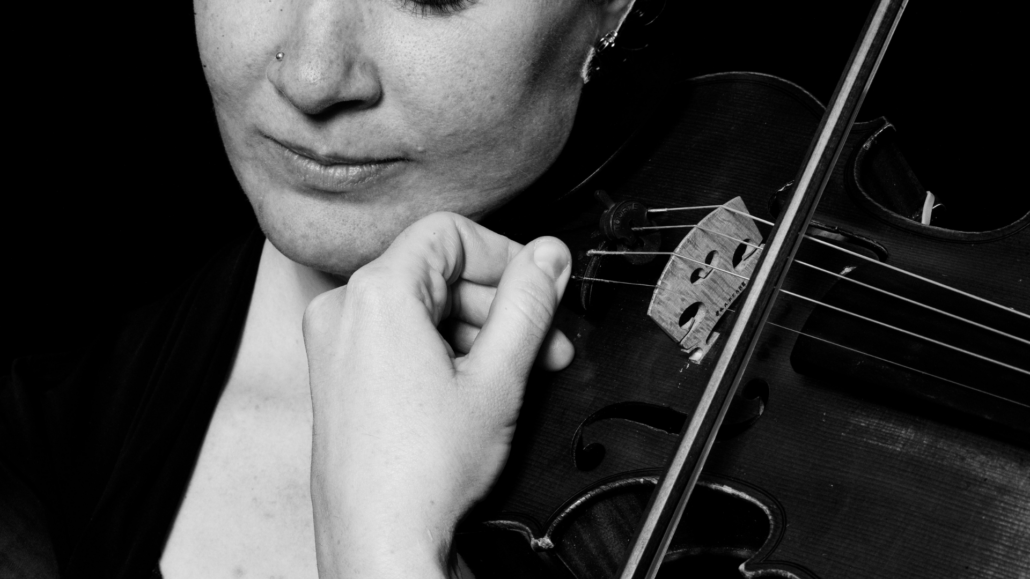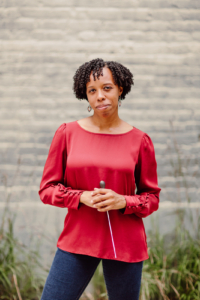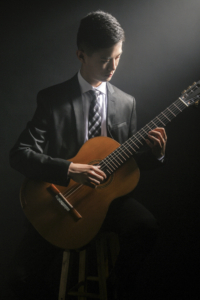NOVEMBER 5, 2023
Cassandra Miller’s Swim was co-commissioned by the Victoria Symphony and Vancouver Symphony Orchestra supported by the Hugh Davidson Fund at the Victoria Foundation, and Royal Northern Sinfonia. The first performance was given by Royal Northern Sinfonia conducted by Dinis Sousa at Sage Gateshead, UK on September 16, 2023.
This is a piece about Robert Schumann, imagining him going for a swim, letting his psyche dissolve there in deep waters, in the repetitive motion of arm-arcs one after the other, left-right, left-right. Swim grew out of a short excerpt of a plaintive brass chorale, found in the fourth movement of Schumann’s Symphony No. 3. It is his “Rhenish” Symphony—however Swim imagines him bathing not in the Rhine (as he did once, almost fatally), but in a cool lake—in a link to the work of Canadian poet Anne Carson. The piece is, all told, as much about Carson as Schumann.
At first, I took each two-chord gesture of the Schumann excerpt and repeated it, in right-left slowness (and blurred it, as if underwater). Each section of Swim then explores images from Carson’s essay, “Water Margins: An Essay on Swimming by My Brother” (as found in the publication Plainwater: essays and poetry, 1995). In Schumann’s original, his chords are imbued with heroic, romantic ideologies, sounding grandiose. In Swim, they take on my own ordinary and resolutely non-heroic feelings about swimming, via Carson’s imagery: dull and vivid colours, quotidian repetition, and cold revery.
Swim is dedicated to my mother, the lake swimmer.
Note by Cassandra Miller
More about the composer
Cassandra Miller is represented by Faber Music
—
Reliable statistics are hard to come by, but it’s probable that the guitar is the most popular instrument on at least five of the world’s seven continents—and perhaps six, if you count the regular jam sessions held at McMurdo Station, a research facility just off the coast of Antarctica. Yet it’s remarkable that the instrument is almost never featured in orchestral concerts—although, admittedly, there are good reasons for this, mostly having to do with the difficulty of finding an acceptable balance between ensemble and soloist.
Acoustic guitars are too quiet, most conductors and composers say, while electric guitars are too loud.
And in the rare instances when the guitar is featured, as it will be in this Victoria Symphony program starring virtuoso Alan Liu and guest conductor Kalena Bovell, the odds are good that the work being performed will be Joaquin Rodrigo’s Concierto de Aranjuez. Such has been the case ever since Regino Sainz de la Maza premiered the work in Barcelona in 1940; with dashing rhythms borrowed from traditional flamenco and sensitive orchestration, it is simultaneously exotic, folkloric, accessible, and sophisticated.
Performing Rodrigo’s masterpiece is a rite of passage for any classical guitarist, and the 21-year-old Liu will be in good company. Julian Bream, although perhaps best known for almost single-handedly sparking a revival of interest in English composers from the Elizabethan era, made a landmark recording of the Concierto de Aranjuez in 1951, when he was only 17, and went on to record it four more times. Flamenco innovator Paco de Lucia reportedly learned to read music so that he could perform the Concierto de Aranjuez; Rodrigo counted it among his favourite interpretations. Andres Segovia, oddly enough, never recorded Rodrigo’s masterpiece, but considered it “a wonderful success” and “truly beautiful”. And Jim Hall, jazz guitar’s intellectual titan, recorded a somewhat abridged version with a band including Chet Baker, Paul Desmond, and Ron Carter. Rodrigo’s opinion, as far as we know, is not on record.
Ironically, though, the most famous version of the Concierto de Aranjuez did not involve a symphony orchestra, nor did it feature the guitar. This came about because, in 1959, a friend had played Renata Tarregó’s recording of the concerto for the jazz trumpeter Miles Davis, who had promptly fallen head-over-heels in love. “After listening to it for a couple of weeks,” Davis told jazz journalist Nat Hentoff, “I couldn’t get it out of my mind.”
Davis soon enlisted his Canadian-born arranger, Gil Evans, to arrange the Concierto’s second movement, along with an excerpt of Manuel de Falla’s 1915 ballet score El amor brujo and three folkloric themes for their 1960 Sketches of Spain album. It was a hit, but not with Rodrigo. Although the composer was credited he had not been consulted beforehand, and he was initially outraged by this oversight. Rumour has it, though, that he was considerably placated when Sketches of Spain made the Concierto broadly famous, and American royalty money came rolling in.
At this point you may well be asking what Rodrigo’s beautiful but essentially conservative 20th-century concerto has in common with the other featured work on this program, Ludwig van Beethoven’s innovative 19th-century classic, the Symphony No. 7 in A major. It’s a good question.
Perhaps these two pieces, joined here by the premiere of a work by Metchosin-born composer Cassandra Miller (* see note above), are best seen as mirror images. Despite its generally sunny disposition, the Concierto de Aranjuez contains an undercurrent of despair that emerges fully only in its second movement. It had been generally supposed that this was in some way an elegy for the Spanish Republicans who had died in the country’s brutal civil war, but some years after the Concierto’s debut it was revealed that while Rodrigo’s sorrow was genuine, it had a more personal source: a miscarriage his wife had suffered during the compositional process.
The Symphony No. 7, in contrast, is marked by Beethoven’s usual seriousness of purpose, but its final allegro con brio movement is a change of pace—in this case to a madcap sequence so rollicking that the composer himself, conducting its 1813 debut, was seen leaping on the podium like a feral goat, and “tearing his arms with a great vehemence asunder”, according to violinist Louis Spohr, who was on the stage. Off stage, the audience was similarly impassioned, demanding a repeat performance of that final movement.
Both then and in the two centuries since, others have been less enthusiastic. Pianist and critic Friedrich Wieck accused Beethoven of having written the Symphony No. 7 while drunk, and the conductor Thomas Beecham took the goat metaphor a little further when, assessing the third movement, he commented “What can you do with it? It’s like a lot of yaks jumping about.”
Frankly, many of us would pay good money to see yaks and goats cavorting on the Farquhar stage; consider the international success of Cavalia. A new revenue stream for the Victoria Symphony? Probably not, so we will have to content ourselves with the orchestra’s stock in trade: energizing performances of excellent music.
Notes by Alex Varty



 Kalena Bovell, conductor
Kalena Bovell, conductor Alan Liu, classical guitar
Alan Liu, classical guitar